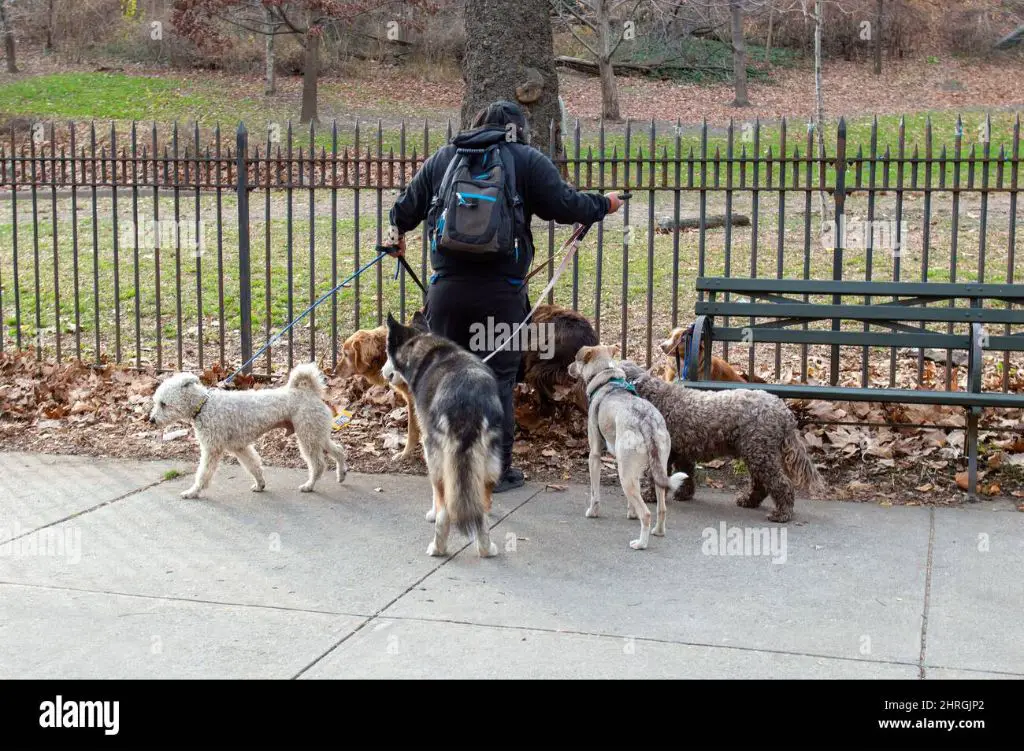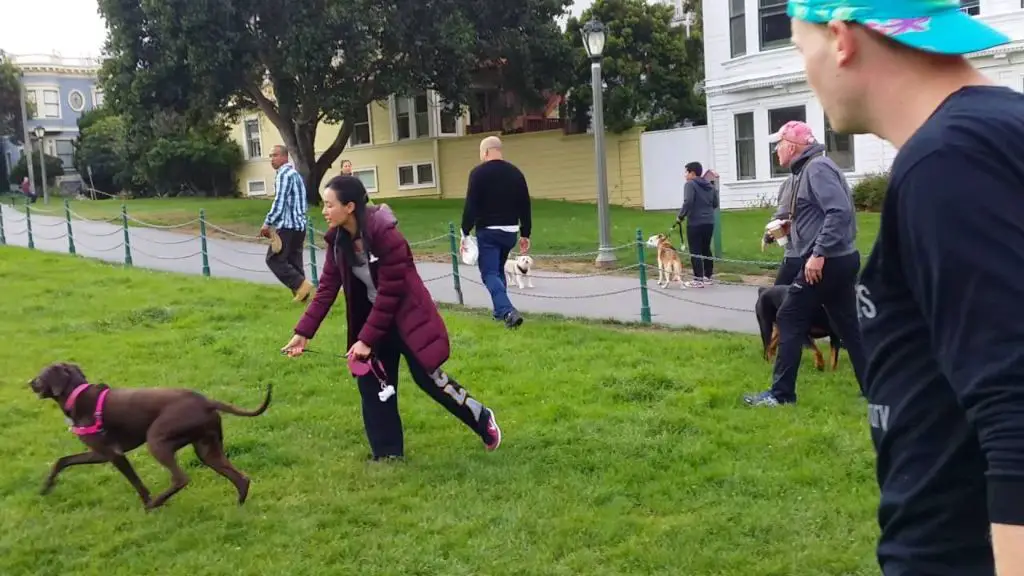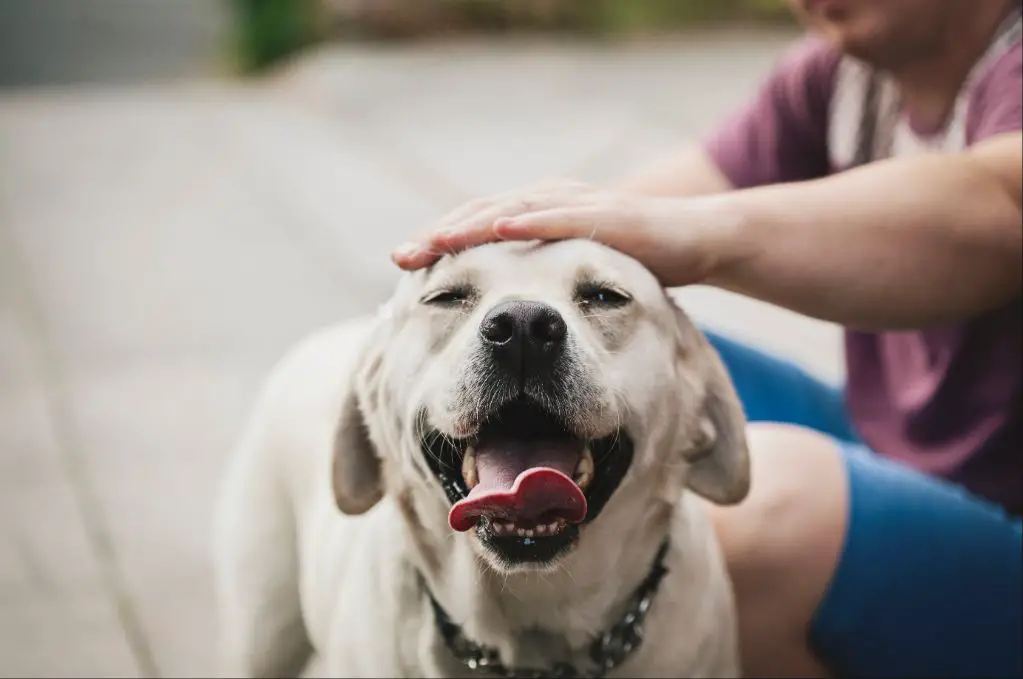Introduction

Being the victim of a dog attack can be a terrifying experience. While most dogs are friendly and docile, some dogs may become aggressive and attack, especially if they feel threatened or are poorly trained. In the moment, your first reaction may be to defend yourself in any way possible, including kicking the attacking dog. However, before resorting to kicking, it’s important to understand the legality, effectiveness, risks, and alternatives involved.
This article will provide a comprehensive overview of whether it is advisable or legally permissible to kick an attacking dog. We will look at techniques for proper kicking, the likelihood of stopping the attack, and the potential consequences. Additionally, we will explore recommended alternatives to kicking as well as prevention strategies and training for dogs. By the end, you should have a full understanding of the considerations around kicking an attacking dog.
Legality of Kicking an Attacking Dog
When facing a dog attack, people have the legal right to defend themselves, even if that means kicking or striking the dog. Self-defense is allowed when in immediate danger of bodily harm. If a dog is actively biting you or lunging to bite, you can legally use reasonable force to stop the attack.
Laws vary by state, but in general you are legally permitted to kick or hit an attacking dog to prevent injury. There is no obligation to first try lesser forms of defense. Any force used should be proportional to the threat, without excessive violence. Hitting vital areas like the head risks serious injury, sofocus on the body. The goal is to stop the attack safely.
After defending yourself, you may not retaliate or continue striking the dog once the threat is over. Any continued violence could result in charges of animal cruelty. The law seeks to allow victims to protect themselves while preventing unnecessary harm to animals.
While permitted, kicking carries risks. Better alternatives exist. Understanding the law empowers victims tojudge appropriate force while protecting themselves from liability.
Effectiveness of Kicking to Stop an Attack

When confronted by an aggressive dog, many people’s instinct is to kick out in self-defense. However, experts advise that kicking should be a last resort during a dog attack. Kicking is unlikely to deter most dogs once they are in full attack mode. Dogs have very high pain tolerance due to breeding. Unless the kick lands perfectly, it will likely only enrage the dog further. The dog may bite the leg being used to kick. Experts recommend staying still like a tree and avoiding eye contact instead of kicking. Only if that fails should kicking be attempted by targeting the dog’s shoulder or chest area with a solid sideways or front kick. Even then, kicking may just distract the dog momentarily without fully halting the attack. Running away is also inadvisable, as that can further trigger a dog’s prey drive. Therefore, while kicking can sometimes briefly disrupt an attack, it should not be relied upon as an effective means to stop a determined, aggressive dog.
Better Alternatives to Kicking
While kicking may seem like an instinctual reaction when a dog attacks, there are often better and safer alternatives to stop an attack without kicking the dog:
Using Pepper Spray – Carrying a pepper spray designed for dogs can stop most attacking dogs quickly when sprayed in the dog’s face and eyes. The burning sensation overwhelms the dog’s senses and stops them in their tracks without long-term harm.
Using a Noisemaking Device – Devices like air horns or personal alarms emit an extremely loud sound that will startle and often scare off aggressive dogs. The noise is unpleasant and disorienting for dogs without physically harming them.
Using a Barrier – If you have a purse, jacket, stick or other object, you can use it as a barrier holding it between yourself and the dog. This acts as a distraction and often turns their aggression away from you without direct confrontation.
While not always effective, these alternatives allow you to attempt stopping an attack without resorting to kicking and risking further escalation or injury to yourself or the dog.
Proper Kick Technique and Targets

While kicking should only be used as an absolute last resort against an attacking dog, if you find yourself with no other options, it’s important to know how to kick properly for maximum effectiveness and minimal risk of injury.
When kicking a dog attack, the most effective targets are the dog’s nose, throat, and chest. Avoid kicking the head, as you risk seriously injuring your foot. The dog’s body and hindquarters are also not ideal targets.
Use a strong, forceful front kick or side kick. Kick straight out and slightly downward at the dog’s nose or throat. Keep your balance and plant your non-kicking foot firmly. Bend your kicking knee and pivot your hips to generate power. Follow through fully to impart impact.
Aim to stun or momentarily disorient the dog, not to seriously injure. The goal is to get the dog to release its bite and give you time to escape safely.
Be prepared to kick multiple times if needed. Do not turn your back or try to run until the dog disengages its attack. Maintain eye contact and assertive energy throughout.
Proper kick technique and strategic targeting are critical. An inaccurate or weak kick could further provoke the dog and intensify the attack.
Risks and Dangers of Kicking

While kicking may seem like an instinctual way to try to stop a dog attack, there are some significant risks and dangers to attempting this:
Possibility of Further Provoking the Dog
Kicking an already aggressive dog may actually provoke it even more and intensify the attack. The kick may be viewed as an act of aggression by the dog, causing it to become more enraged and vicious. So kicking could potentially escalate the situation and put you in greater danger.
Missing the Kick
It’s very difficult to land an accurate and forceful kick on a fast moving dog in the midst of an attack. Adrenaline and fear decrease coordination and precision. If you miss the kick or fail to make solid contact, you’re unlikely to deter the dog and may become even more vulnerable.
Aftermath of Kicking an Attacking Dog
Kicking a dog, even in self-defense, can lead to potentially serious legal and emotional consequences. If the dog is injured, you may face charges of animal cruelty or lawsuits from the dog’s owner demanding compensation for vet bills. Even without physical injury, the dog may develop fear or aggression issues from being kicked, worsening its behavior in the future.
On an emotional level, having to kick a beloved family pet or neighbor’s dog in order to stop an attack can be extremely traumatic. Many people form close bonds with dogs and the act of violence needed for self-defense, even if justified, can be psychologically damaging. Kicking an unfamiliar stray dog also takes an emotional toll, since most people do not actually wish to harm animals.
In terms of physical injuries to the dog, kicks can result in bruising, fractures, head trauma, organ damage or even death in some cases. Generally, the level of injury depends on the size and strength of the dog and person, and the force and location of the kicks. While human safety must come first, kicking carries risks of inflicting serious or fatal injuries on the dog, which could have legal and moral consequences.
The aftermath of kicking an attacking dog is rarely straightforward or easy. While it may stop an attack, there are many potential legal, emotional and ethical implications to consider in the short and long-term following such an intense act of self-defense.
Prevention of Dog Attacks

The best way to handle a dog attack is to avoid being attacked in the first place. Here are some tips to help prevent dog attacks:
Avoid approaching strange dogs – Don’t try to pet or interact with a dog you don’t know, even if it seems friendly. Dogs may interpret direct eye contact, touching, or other engagement as threatening.
Don’t run past dogs – Running can trigger a dog’s prey drive and cause it to chase you. Walk calmly and don’t make sudden movements if you need to walk near a dog.
Travel in groups – Walking with other people can help deter attacks, as dogs are less likely to see a group as vulnerable.
Carry deterrent spray – Having citronella spray or pepper spray on hand can help stop an attack in progress by startling or irritating the dog.
Be vigilant – Pay attention to your surroundings and leave situations where dogs are off-leash or seem aggressive. Cross the street if you see an unrestrained or barking dog ahead.
Avoid eye contact – Looking directly at an unfamiliar dog could be viewed as threatening. Avert your gaze as you pass by.
Stand still if approached – If a strange dog comes up to you, freeze and avoid reaching out to pet it. Wait for the dog’s owner to gain control of the situation.
Protect children – Children should be closely supervised around strange dogs and taught safe behavior like not running up to pets, hugging dogs, or startling them.
Training Dogs Not to Attack
One of the most effective ways to prevent dogs from attacking is through proper socialization and training from an early age. Puppies that are exposed to a wide variety of people, animals, places, and situations are less likely to react out of fear or aggression as adult dogs.
Dog owners should make efforts to socialize their puppies in a safe and controlled manner during the critical socialization period between 3 and 16 weeks old. This involves positive interactions with people of different ages, appearances, and behaviors, as well as introducing the puppy to other dogs and friendly animals. Professional training classes provide helpful supervised settings for socialization.
Obedience training is also essential to teach dogs basic cues like “sit,” “stay,” and “come,” as well as impulse control. Dogs should be positively reinforced for calm, polite behavior around people, other dogs, and potential triggers. Proper obedience training helps prevent chasing behaviors or reacting out of fear in ambiguous situations.
With early socialization and continued training, owners can minimize the risk factors that may otherwise lead their dogs to feel threatened enough to attack unprovoked. Raising dogs to be confident, obedient companions greatly reduces the chances that they will lash out aggressively at people or other animals later in life.
Conclusions
In summary, kicking should only be used as an absolute last resort when being attacked by a dog. While it may be effective in some cases, there are better alternatives like using pepper spray, creating barriers, or attempting to calm the dog. If kicking is necessary, aim for sensitive areas like the nose, throat or stomach but be aware of potential legal issues. The aftermath of kicking a dog can be complicated, so prevention through training and socialization is ideal. The main takeaways are:
- Kicking has risks like aggravating the dog and legal repercussions.
- Better alternatives exist like spray, barriers, or calming techniques.
- Only kick as an absolute last resort by targeting sensitive areas.
- Prevent attacks through proper training and socialization.
- Focus on de-escalation, escape, and minimizing harm to both parties.